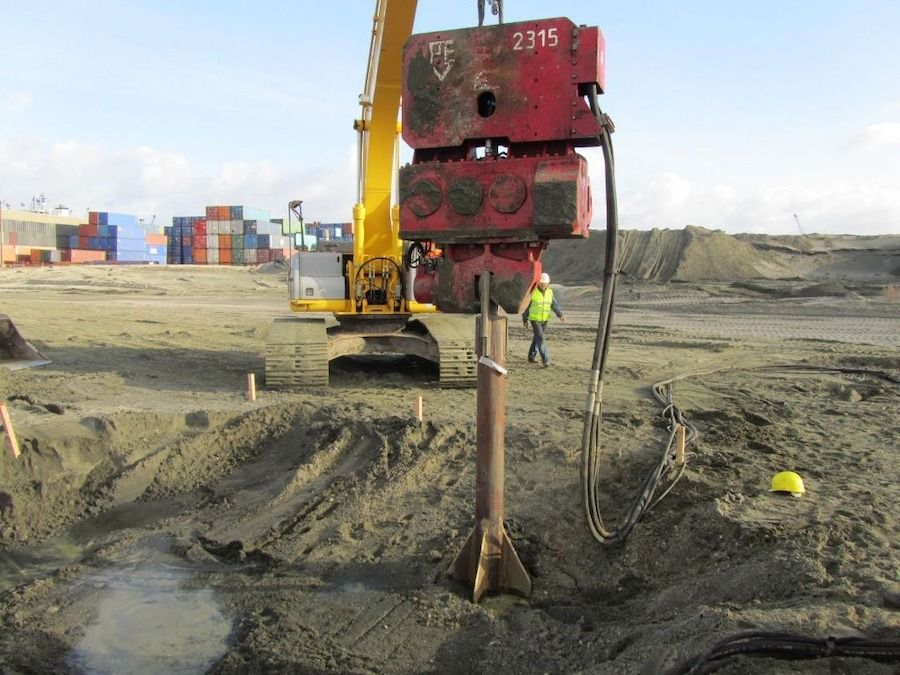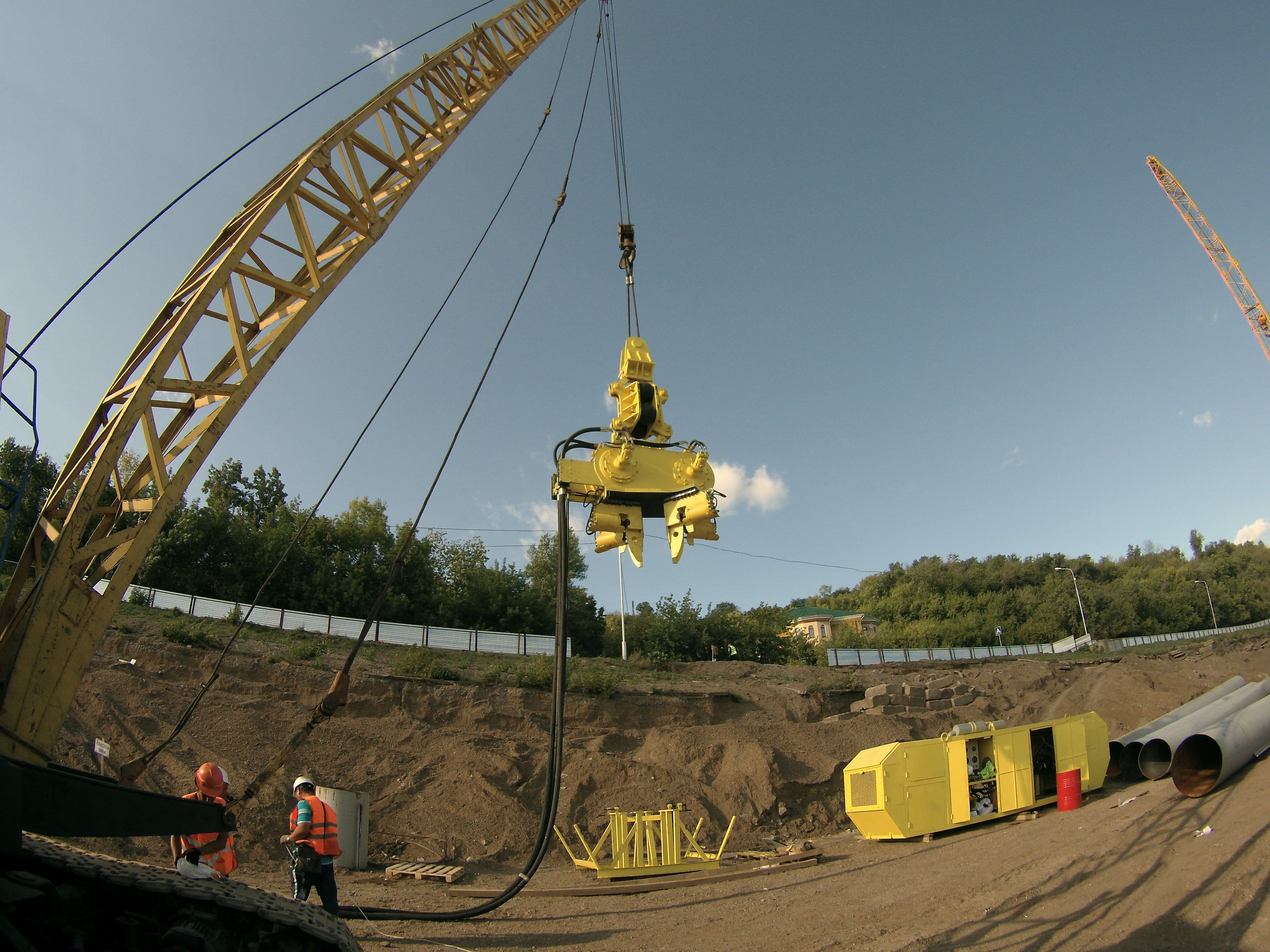The Hidden Cost of Skipping Maintenance
In heavy construction, especially deep foundation and infrastructure projects, pile driving equipment plays a central role. These machines operate under extreme force and pressure, often in challenging environments. Even the most durable equipment, however, cannot perform reliably without regular and intentional maintenance.
Many contractors delay or overlook maintenance until a problem becomes visible. But most equipment failures begin long before the machine actually stops working. Small hydraulic leaks, worn seals, dirty filters, and misaligned components quietly reduce performance day by day. This leads to higher fuel usage, inconsistent driving accuracy, safety risks, and unplanned downtime that stalls entire projects.
Ignoring basic maintenance not only shortens the machine’s lifespan but also increases operational costs and regulatory exposure. A single neglected part can result in days of delay, emergency repairs, and thousands in lost productivity.
What You’ll Learn in This Guide
This guide gives a structured, professional approach to pile driver maintenance that supports long-term machine health, jobsite safety, and cost efficiency. Inside, you’ll discover:
- The most important daily checks to perform before operation
- How to plan and carry out scheduled servicing
- Which parts wear out fastest and how to manage replacements
- Smart practices for operator training, storage, and condition tracking
Whether you're a project manager, foreman, or independent contractor, this article delivers practical, experience-based insights that help you prevent problems before they start and keep your equipment running strong for years to come.
How to Maintain Pile Driving Equipment
To properly maintain pile driving equipment, start with a daily routine that includes inspecting hydraulic lines, checking fluid levels, cleaning components, and confirming safety systems. Follow a consistent servicing schedule based on hours of operation—typically every 250 to 500 hours—for oil changes, filter replacements, torque checks, and calibration. Replace high-wear parts like seals, drive caps, and dampeners before failure occurs. Combine these steps with trained operators, proper storage, and the use of OEM-approved parts to ensure long-term performance, reduce breakdowns, and maximize equipment lifespan.
Daily Maintenance Checklist
Before every shift, a quick but thorough inspection can prevent hours of downtime later. These daily checks take only a few minutes and are essential for identifying early signs of wear, malfunction, or safety risks. Operators should be trained to follow this routine before starting the machine each day.
Visual Inspection
- Walk around the equipment and look for visible cracks, dents, or structural damage
- Inspect hoses, fittings, and clamps for any signs of hydraulic leaks
- Check for loose bolts, fasteners, or any unusual wear around moving parts
- Look at the drive cap, hammer, and guides for any misalignment or residue buildup
Fluid Levels and Lubrication
- Check hydraulic fluid, engine oil, and coolant levels
- Refill as needed using the manufacturer’s recommended fluids
- Inspect lubrication points and apply grease where required
- Look for contamination in fluid reservoirs or unusual fluid color
Safety Systems and Controls
- Test emergency stop switches and control panel indicators
- Ensure all guards, barriers, and sensors are properly mounted and functioning
- Check remote control units or operator consoles for responsiveness
- Confirm warning labels and safety decals are clearly visible
Cleanliness and Reset
- Remove mud, dust, or debris from critical components and vents
- Clean the hammer area, anvil, and pile leads to ensure proper alignment
- Reset the machine properly to idle or standby mode after inspection
Following this routine not only reduces the risk of unexpected breakdowns but also improves the operator’s familiarity with the machine, leading to faster troubleshooting and fewer mistakes. These equipment care tips are the foundation for safe, reliable, and long-lasting performance.
Scheduled Servicing: Weekly and Monthly Intervals That Matter
While daily inspections keep your pile driver in check, scheduled servicing is where deeper performance protection happens. This level of maintenance targets internal systems and components that degrade gradually but critically over time. Ignoring these can lead to premature failure, even if the machine looks fine on the surface.
Maintenance Frequency by Machine Hours
Service intervals are generally based on hours of active operation, not calendar time. Most manufacturers recommend:
- Every 250 hours: Light to moderate service
- Every 500 hours: Full service with component checks
- Annually or 1,000+ hours: Comprehensive inspection and rebuild planning
Always refer to the specific machine's operation manual, as intervals may vary by model and usage intensity.
Core Servicing Tasks
Whether done in-house or by a certified technician, these are the most important servicing steps:
- Change hydraulic oil and engine oil to avoid buildup and loss of pressure
- Replace oil, fuel, air, and hydraulic filters for optimal flow and cleanliness
- Torque-check bolts, connections, and mounting points to prevent loosened or stressed fasteners
- Inspect belts, bearings, valves, and seals for wear, corrosion, or misalignment
- Calibrate sensors and control systems to ensure precise operation
- Flush cooling systems and clean out fluid reservoirs if needed
Stick to Manufacturer Guidelines
Every pile driver model is engineered with different tolerances and specs. Servicing piling machines according to the OEM manual is critical for warranty coverage, component compatibility, and safe function. Using generic parts or skipping a specified check can result in costly damage that isn't covered under manufacturer terms.
Scheduled maintenance is not a one-size-fits-all routine. It must be tracked, logged, and aligned with actual usage. A properly serviced machine not only performs better but also retains more value, runs more efficiently, and dramatically reduces the risk of mid-project downtime.
Common Part Replacements: What Wears Out First and Why
No matter how disciplined your maintenance routine is, some components of pile driving equipment are simply built to wear. These parts absorb the most impact, pressure, or friction during daily operations. Recognizing their expected lifespan and replacing them preemptively can save both time and money.
High-Wear Components to Monitor
- Hydraulic seals and hoses – Often degrade within 6 to 12 months due to pressure cycling and environmental exposure
- Drive caps and cushion blocks – Absorb direct energy transfer; inspect every 100–200 hours depending on usage
- Dampeners and elastomer pads – Typically need replacement every 300–400 hours to maintain impact absorption
- Pins, bushings, and linkage components – Prone to loosening or wear, especially in machines operating in rocky or abrasive soils
- Filters and fluid lines – Can clog, degrade, or corrode over time and reduce system efficiency
Lifespan Expectations by Usage
- Light-duty (occasional use): Replace critical parts every 12–18 months
- Standard-duty (weekly jobsites): Service and inspect every 6–9 months
- Heavy-duty (daily commercial work): Inspect monthly, replace every 3–6 months as needed
Smart Budgeting Tip
Always keep a spare parts kit on-site for your specific model. Ordering in advance, based on projected wear cycles, avoids costly emergency shipments or downtime. Work with your manufacturer or dealer to identify high-turnover parts and set reorder alerts.
Best Practices for Long-Term Use
Routine maintenance is only part of the equation. To truly extend the lifespan and reliability of your pile driver, it's essential to embed smart usage habits into your operations.
Train Operators the Right Way
Untrained or inconsistent machine use leads to misuse and unnecessary wear. All operators should be trained in:
- Proper start-up and shutdown procedures
- Avoiding overdriving or side-loading piles
- Identifying early warning signs during operation
Store Equipment With Care
When idle, store machines in clean, dry areas or use weather-resistant covers. Moisture, temperature swings, and UV exposure can degrade seals, hoses, and electronic systems faster than use itself.
Avoid Overloading and Misuse
Never exceed rated capacities or cycle limits defined by the manufacturer. Overload not only shortens component life but also increases structural fatigue and the risk of failure during operation.
Use Certified Parts and Lubricants
Always use OEM-approved replacement parts and the correct hydraulic fluids, oils, and greases. Cheaper alternatives may cause internal wear, invalid warranties, or system failure.
For more strategies on getting the most from your equipment, check out our durability tips article covering component life extension and optimized jobsite handling.
Pro Tips From the Field
Sometimes, small habits make the biggest difference. We asked experienced operators and equipment techs for the advice they wish more crews followed.
"You don’t wait for the hammer to sound different. You check the cushion blocks before it happens. That’s what keeps jobs on schedule." — Ray M., Field Technician, 22 years in piling equipment servicing
Do This, Not That
- Do inspect under load while idling. Don’t wait for full-speed operation to notice misalignment.
- Do grease all pivot points after cleaning. Don’t assume yesterday’s lubrication still holds.
- Do document service dates and part replacements. Don’t rely on memory or verbal reports.
These insights, practiced consistently, prevent most jobsite failures before they start.
Industry Stats Worth Knowing
Here are a few field-backed statistics that highlight just how much proper care pays off:
- 60% of hydraulic failures are traced to neglected filter changes or fluid contamination
- Well-maintained pile drivers can operate 30 to 50 percent longer than machines with reactive care
- Planned maintenance reduces total ownership cost by an average of 25% over five years
- The average cost of a mid-project pile driver failure: $6,000–$12,000 in repairs and downtime
Preventive care isn’t just smart — it’s a measurable financial advantage.
Explore related content and support materials to strengthen your maintenance strategy
- Pile Driver Servicing Guide — Comprehensive walk-through of scheduled tasks
- Specific products details — Quick access to specifications and safe-use protocols
- More Blog Posts — Tips, updates, and deep-dives into equipment performance topics
Need help finding specific documentation or servicing kits? Contact our team for assistance.
Keep Your Equipment Working Harder, Longer
A strong maintenance routine turns equipment into a long-term asset, not a recurring liability. With daily checks, scheduled servicing, and smart usage practices, your pile driver can remain productive, reliable, and safe for years.
Investing in maintenance now prevents lost time, protects your crew, and preserves the value of every job you deliver. Whether you're just starting to formalize your servicing process or refining an existing one, it’s the next best decision for your business.
Get started today, review the service guide, or reach out for equipment-specific support.




